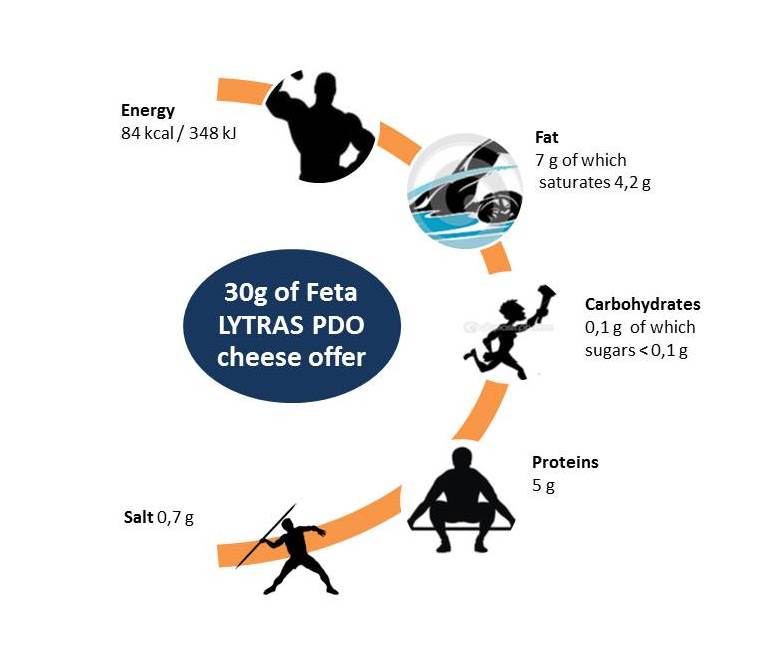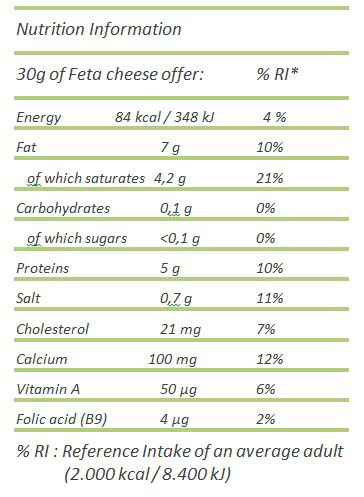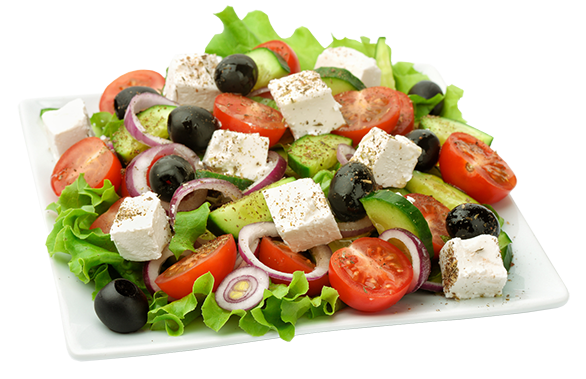 Nutrition information
Nutrition information
Eating Feta is a pleasure and a benefit for our body.
Feta cheese is an excellent source of proteins and calcium.
Protein contributes to the maintenance of normal bones and muscle mass
Calcium is needed for maintenance of normal teeth and bones and it contributes to:
normal muscle function
normal neurotransmission
normal energy-yielding
metabolism
normal function of digestive enzymes
normal blood clotting
Low Lactose content
Feta LYTRAS contain very low amounts of lactose and it may be safer for consumption by people suffering from lactose intolerance.Less Allergenic
Studies show that Feta is easier to digest and much less allergenic and inflammatory than cheeses from cow’s milk, which is encouraging to those who may be sensitive to dairy products.

Greeks and French are No.1 consumers of cheese in the world, as each one consumes about 24 kg of cheese per year in average
Fatty acids of small molecular weight in the milk fat, affect the final flavor of the cheese. Sheep milk and especially goat milk, contain important quantities of caproic, caprylic and capronic acids, the fermentation of which result in the production of the typical aromatic compounds of traditional Greek Feta cheese.


Consuming 100g of Feta cheese per day one can cover 1/3 of his Daly needs in Protein and Fat and nearly ½ of the needs in Calcium

There are many ways to consume Feta
You can lay the cubes over your salad include it as part of a pasta or rice salad, add it to a sandwich or melt it in tacos, use it in a variety of cooking recipes.
Feta and mint blended into plain non-fat yogurt makes a low-calorie, high-calcium dip for cucumbers and red pepper strips.
